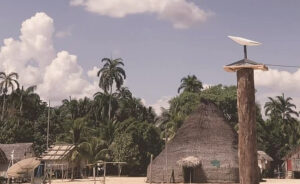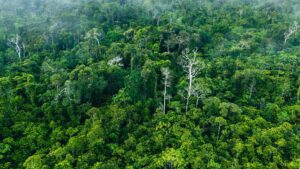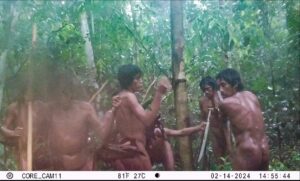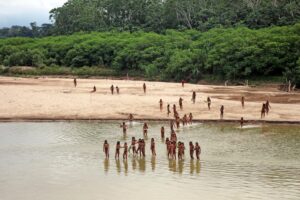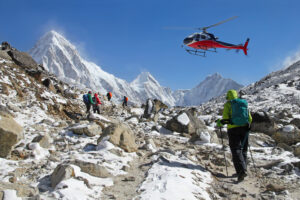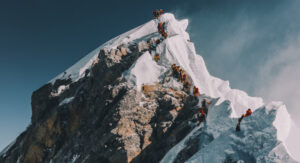The tragedy took place near Coari, Ilha Grande da Botija, an island on the Solimoes River in Brazil.
Rape, Torture and Murder on the Amazon
By Piotr Chmielinski
Sept. 21, 2017
On September 13, Emma Kelty, a British kayaker paddling alone on the Amazon River, published the last post on her Facebook profile. She wrote about meeting three lovely locals and two kittens playing and sleeping next to her tent, which was a nice change after meeting 30 armed men in motorboats earlier. The sight of guys with rifles was frightening, especially in the context of the bad reputation of this region of the Amazon and Brazil. “All ok,” she wrote in the evening of September 12. The next day, at about 8 pm, she was murdered.
Probable course of events
The tragedy took place near Coari, Ilha Grande da Botija, an island on the Solimoes River (the name used in Brazil for the section of the Amazon between Tabatinga and Manaus). As reported by The Sun newspaper, Emma was the victim of a seven-person gang of drug dealers. The bandits fired into the kayaker’s tent. Then they transported her body about 100m from the shore and threw her into the river.
It is believed that the woman was still alive. From the tent, the bandits robbed electronic devices like a drone, tablet, cameras, and a video recorder. The next day they tried to sell them in Coari and Lauro Sodre. The latter report of The Telegraph brings additional tragic information: “Emma Kelty was tortured and raped as she died after being shot, villagers have claimed.”
The Brazilian police caught three of the seven bandits. The members of the gang were young people, twenty-something years old, and two — the ones arrested — were only 17. The detainees admitted to being involved in the crime, but they accused their comrades, who were now hiding in the jungle, of killing the woman.
Emma’s body has not been found so far. The police did come across her kayak, which her attackers had failed to sink. The search continues.
Emma’s lonely expedition
Emma Kelty, the head teacher of the school in Finchley, London, had set her sights on traveling alone. After a solo ski trek to the South Pole, she wanted to paddle the mighty Amazon. When she contacted me for the first time to discuss some of the issues she was concerned about, she was determined to undertake a solo expedition, without any support from the outside, and without even stepping on the land. Taking into account my opinion and concerns, and those of other travelers, based on our knowledge and experience regarding the conditions and characteristics of the river, forced her to modify what she had planned. There is no way to pack a little kayak with food for several months, there is no way to live in it day and night throughout the journey, and there were many, many more “no-ways”. “Unsupported and unassisted is unrealistic for this river/journey” – she wrote in one of the emails. “But I will try to take on this challenge and where possible entirely by myself.”
“Paddling solo”, according to Emma’s plan, meant taking the risk of being alone, without a guide or guardian in the most dangerous areas in the Amazon basin. And it was not about the threat from nature, but on the part of people involved in the drug-trafficking world.
Bandits and pirates of the Amazon
The Amazon flows from its permanent source in the Ticlla Cocha Lake on the Apurimac River, or from the seasonal source in the Mantaro River, to the Atlantic estuary. It leads through two extremely dangerous zones controlled by bandit groups engaged in cocaine trafficking and smuggling. This area is known also for sometimes deadly attacks on travelers. Although the vast majority of the inhabitants are friendly and hospitable, these areas are invariably shrouded in the bad reputation they owe to aggressive cartel actions.
First, travelers enter the so-called Red Zone, an area of Peru populated by Ashaninka Indians. Exactly there, near the town of Tahurapa in 2011, a married couple of Polish kayakers, Celina Mróz and Jarosław Frąckiewicz, were murdered.
Because of Emma’s limited experience in whitewater kayaking, I suggested that she launch her trip on the Marañon River, one of the main Amazon tributaries, and also in the past considered its source (hydrological or historical source)**. During that part of her journey, she decided to take advantage of help from experienced paddlers familiar with the raging Andean water,s paddlers who supported her in the technically difficult segments. But most importantly, by taking the Marañon route she bypassed the Red Zone.
Unfortunately, another dangerous zone, stretching from Tefe to Manaus in Brazil, could not be avoided. This area is infamous for its pirate activities. Of course, pirates of the twenty-first century are equipped with fast, modern boats, weapons, and communication systems that are capable of monitoring and targeting potential victims. Traveling in 2015 along the Amazon River on their Amazon bikes, brothers David Andres and Hubert Kisinski came in contact with three such groups. They were very lucky to get away without any harm. Emma was not so lucky.
In the conclusion, let’s get back to Emma’s Facebook profile, where her siblings, Piers, Giles and Tash, write: Emma was an active and determined sister who challenged herself, latterly through her adventures on the Pacific Coast Trail, as well as in the South Pole and Amazon River. In a world that is today a much smaller place, the explorer in our sister found herself seeking ways to prove that challenges were achievable.”
Emma Kelty, unfortunately, did not reach the goal of her last expedition. She did not become the first woman to have paddled the Amazon River alone, not even one of the few kayakers who have done it. Nevertheless, it was a very challenging goal, extremely difficult, exhausting and dangerous. Risky for any traveler, and for various reasons for a single woman in particular.
*“The Telegraph” Canoeist Emma Kelty was ‘raped and tortured’ before bungling attackers set off SOS alarm
**Sources of the Amazon:
Constant, permanent and most distant source of uninterrupted flow: Ticlla Cocha Lake where Apurimac River begins.
The seasonal source in Cordillera Rumi Cruz – where Mantaro River starts, is the most distant not-continuously water run. It becomes the most distant source only during the rainy season.
The Marañon River (based on the volume of water – hydrological source). The Marañon River is sometimes called the historical source of the Amazon.
(from https://www.adventurestats.com/tables/RiverAmazon.shtml)

